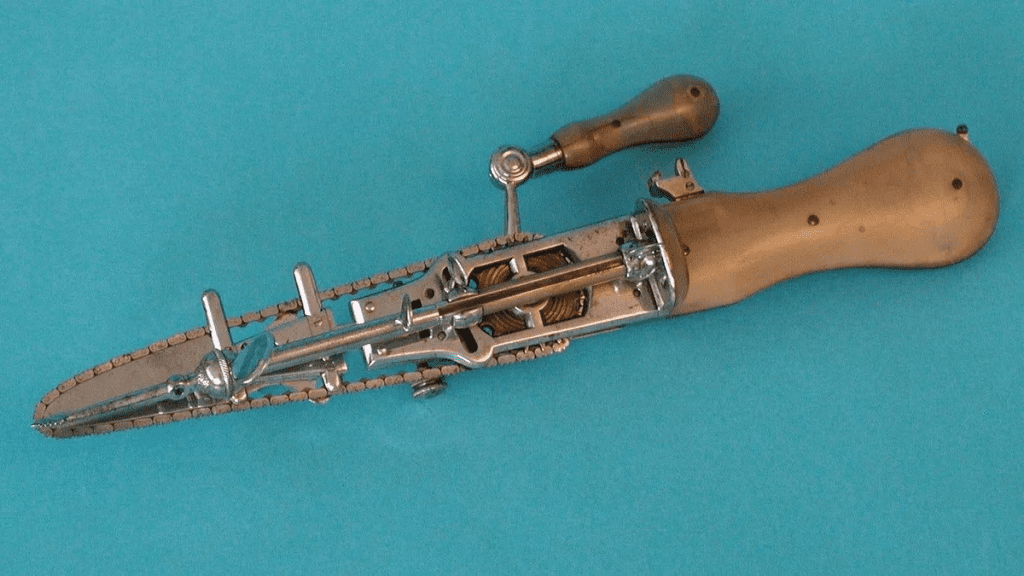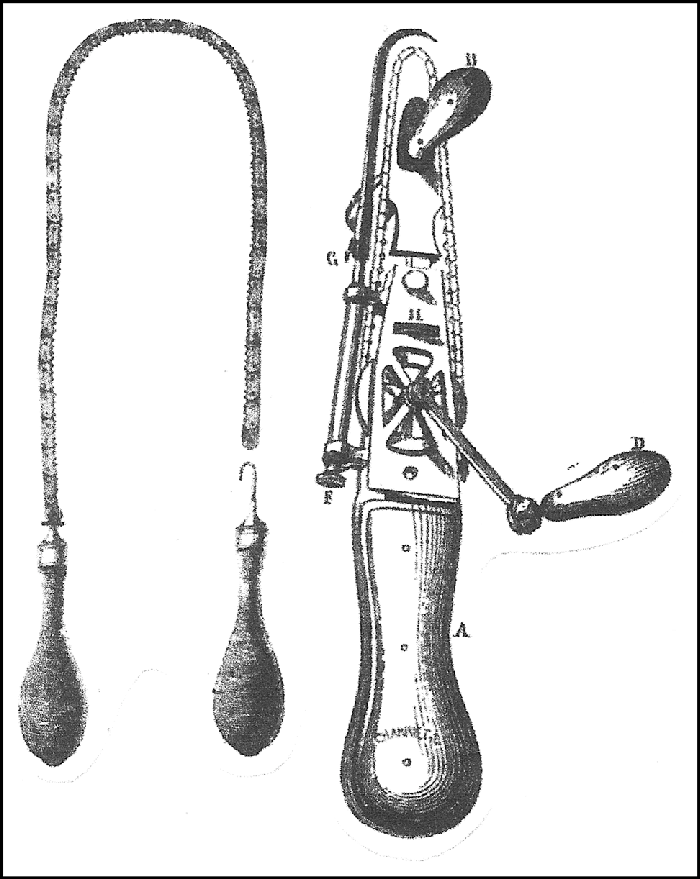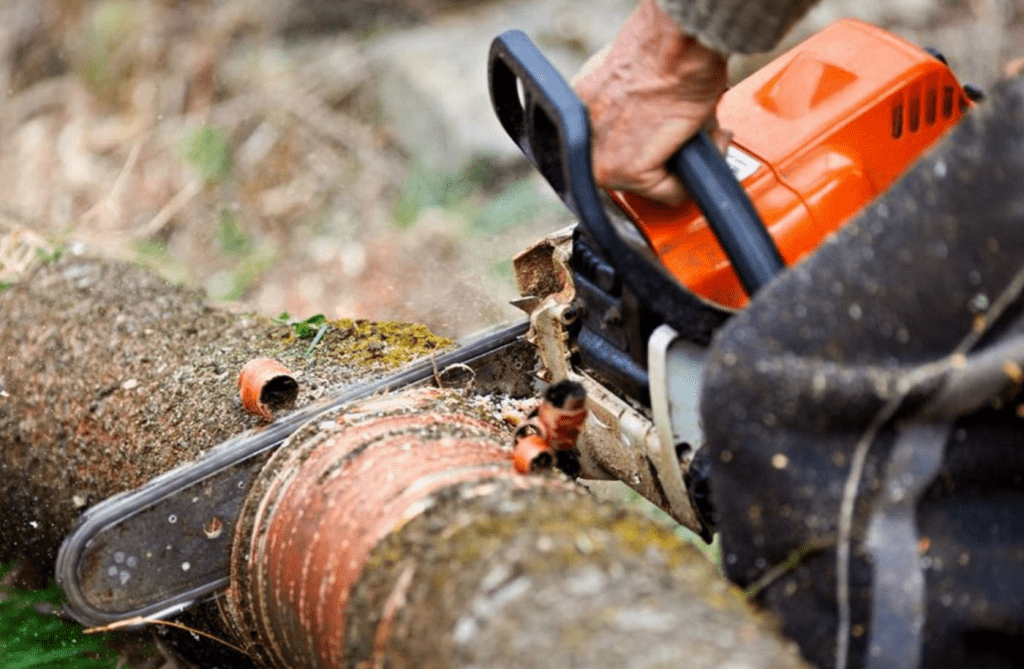When most people think of chainsaws, they picture buzzing machines cutting through thick trees in the heart of the forest. But the real origin of this powerful tool is not rooted in lumberjacks or logging it’s actually tied to the operating room. Long before it roared through timber, the chainsaw was a surgical instrument designed to assist with one of the most difficult medical procedures of the 18th century.

A Medical Invention Born of Necessity
Back in the 1780s, childbirth was not only painful but also potentially life-threatening for both mother and baby. In complicated deliveries, especially when the baby was stuck in the birth canal, doctors had very limited options. One of the common procedures was symphysiotomy, a surgical method where the cartilage of the pelvic joint was cut to widen the pelvis and help the baby pass through.

This brutal procedure needed a tool that could cut through bone quickly and precisely. Traditional methods with knives and saws were not only time-consuming but incredibly painful and dangerous. So two Scottish doctors, John Aitken and James Jeffray, developed what could be considered an early form of the modern chainsaw. It was a hand-cranked device with small, sharp teeth on a chain that could rotate and slice through bone more efficiently.
Video:
Unexpected History of the Chainsaw: From Surgery to Sawdust
How the Original Chainsaw Worked
This early version was small and operated manually. Unlike the roaring gas-powered tools we see today, this surgical chainsaw looked more like a modern-day kitchen tool. The rotating chain had serrated links that acted like miniature blades. It was guided by hand to cut through bone in a cleaner and faster manner.
Though the tool itself represented a breakthrough in medical technology at the time, the procedures it was used for were far from humane. Anesthesia was still in its infancy, and antiseptic practices were not yet standard. That meant surgeries with the chainsaw were not only excruciatingly painful but also carried high risks of infection and death.

Advancements in Medicine Bring Change
Thankfully, medical science progressed rapidly in the following decades. With the development of safer surgical techniques, anesthesia, and an understanding of sterilization, the need for such brutal procedures diminished. By the late 19th and early 20th centuries, the medical chainsaw faded into obscurity.
But the core idea behind it the efficient cutting mechanism did not disappear. Innovators began to see potential in this technology for tasks outside of medicine.

From the Operating Room to the Logging Industry
By the 1920s and 30s, inventors and engineers had begun to adapt the rotating chain mechanism for more industrial purposes. The timber industry, which had long relied on axes and manual saws, stood to benefit greatly from a more powerful and efficient cutting tool.
Video:
Chainsaw Dissection
The chainsaw evolved into a gas-powered machine capable of felling large trees in minutes. Its portability and speed revolutionized logging operations, reducing the physical toll on workers and dramatically increasing productivity.
The Modern Chainsaw: A Tool with a Surprising Past
Today, chainsaws are used for everything from tree removal and storm cleanup to ice sculpting and even competitive lumberjack sports. Modern chainsaws come with multiple safety features, ergonomic designs, and powerful motors. They are no longer associated with the brutal surgeries of the past, yet their original purpose remains a fascinating footnote in the history of technology.
It’s hard to imagine that the same fundamental mechanics behind today’s forest-cutting power tool were once used to slice through human bone in the name of medicine. That transformation from a surgical instrument to a tool of industry shows how innovations can evolve and adapt far beyond their original design.

Conclusion: Innovation in Unexpected Places
The chainsaw’s story is a reminder that history is full of surprises. What began as a device meant to save lives under the harshest conditions eventually became a symbol of raw power in forestry and construction. It also shows how tools can outgrow their original intentions and find new purposes in unexpected places.
The next time you hear the buzz of a chainsaw, remember: it wasn’t always about cutting trees. Once upon a time, it was about delivering babies.


